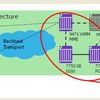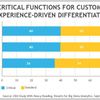The glass can be half empty or half full when it comes to mobile broadband.
On the one hand, data usage is growing at exponential rates, and seems to be no end in sight. In fact, it is projected that by 2017, the monthly mobile broadband usage of the average subscriber will reach 5 GB, according to research from Alcatel-Lucent Bell Labs.
On the other hand, the emergence of LTE enables operators to more cost-effectively monetize this traffic demand by rolling out quality-of-service (QoS) guarantees for sensitive data traffic such as voice-over-LTE (VoLTE), as well as other data service packages that until recently did not make sense.
Finding the glass half full from the emerging data storm requires some planning when rolling out LTE, however. Network optimization is not a given. While LTE flattens IP traffic and enables new business models it also introduces new problems. Chief among them is increased network signaling rates.
Signaling rates are much higher with LTE over 2G and 3G systems, according to research from Alcatel-Lucent. Conservative estimates paint the networking signaling load increase at 166 percent with LTE. The reasons for the increase include heightened mobile application use on such networks, chatty apps, device idle-to-active and active to idle transitions and frequent LTE/3G/Wi-Fi/small cells coverage handovers.
To handle this increase, operators must ensure that they have an evolved packet core that efficiently deals with this signal load increase. It needs to be split into a mobile gateway that represents the service edge of the LTE network, and a mobility management entity.
“Gone are the 2G/3G days of setting up a big fat, best-effort pipe, sending everything through and hoping for the best,” noted a recent Alcatel-Lucent blog post By Pat McCabe and Dave Nowoswiat, Product and Solutions Marketing, IP Routing and Transport, Alcatel-Lucent, entitled, Evolved Packet Core: at the heart of LTE’s global momentum . The authors note that, “To meet these data processing and capacity requirements, the EPC mobile gateways (GW) – the Serving GW and Packet data network GW – are best suited to an IP router-based platform – specifically one with separate and dedicated processors for control, packet forwarding and deep packet inspection.”
They further explain that on the mobility management entity side of things, operators need to make sure that they are built with high-performance CPUs in a low cost industry standard computing platform to cost-effectively maintain performance.
The recognition that a beefed up evolved packet core is the way and wave of the future can be seen in recent work done by Infonetics Research who has estimated that the evolved packet core market will balloon to $8 billion by the end of 2017.
Whether operators take the glass as being half full or half empty, one thing is clear: There’s a data storm, winners will be determined by how they handle it and an evolved packet core is going to be a central piece of the equation for success.













